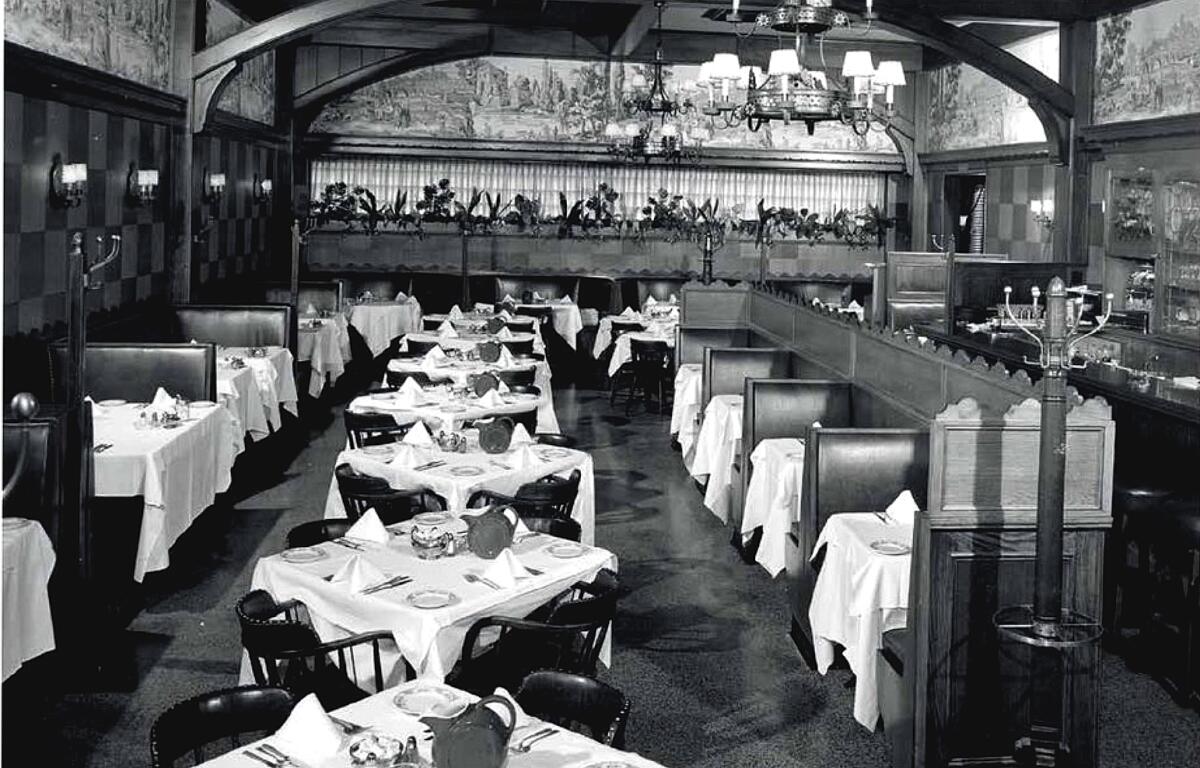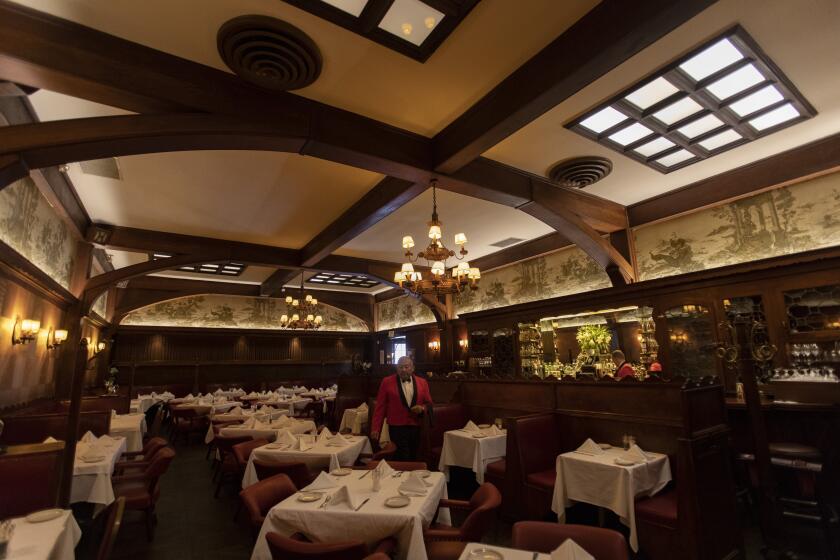Place History: How an L.A. bookshop became the house bar of a literary golden age

- Share via
This story is part of Lit City, our comprehensive guide to the literary geography of Los Angeles.
Raymond Chandler used it as the model for Arthur Geiger’s bookstore in his 1939 debut novel, “The Big Sleep.” Edmund Wilson took the title of “The Boys in the Back Room” — his 1941 study of California authors James M. Cain, John O’Hara, John Steinbeck, William Saroyan and F. Scott Fitzgerald — from the clubhouse in the rear. Budd Schulberg called it “the nearest thing to a Left Bank we had out there.” For all of them, as well as other writers in Los Angeles during the 1930s, the Stanley Rose Book Shop, located at 6661½ Hollywood Blvd., next door to Musso & Frank, was both gathering space and watering hole, a home away from home.
Rose was, by all accounts, an unlikely littérateur: a rough-hewn Texan who, according to Jay Martin’s “Nathanael West: The Art of His Life,” “had not gone beyond the fourth grade and had not learned to read until he was wounded in World War I.” In 1928, as a partner in the aptly named Satyr, another Hollywood bookshop, Rose spent 60 days in jail after being convicted of pirating Chic Sale’s salacious novel “The Specialist.” He opened his eponymous store in 1935 with financial assistance from crusading journalist Carey McWilliams and became Saroyan’s agent. He was also a soft touch who, as Martin writes, “loved writers, lent them money, let them sign his name at Musso & Frank’s.” Such profligacy ultimately led to the shop’s demise in 1939.
Look beyond the cultural institutions of L.A. to find the places where writing movements were born. Five unexpected place histories of a literary city.
Throughout its short life, however, the Stanley Rose Book Shop became nothing less than a Southern California cultural center, not least because of its back room. Writers including Saroyan, Schulberg and Fitzgerald, as well as William Faulkner, Dorothy Parker, Horace McCoy, John Fante, Erskine Caldwell and John O’Hara, drank and talked and fought there. West and Rose became close friends. The room was also used as a gallery; Rose gave artists such as Paul Klee, Alexander Calder and Henry Moore their earliest California shows. Especially at a time when Los Angeles was regarded as provincial — “I have the best writer in the world — for peanuts,” Jack Warner once boasted of Faulkner, under contract for $300 a week — Rose, like his contemporary, bookseller and publisher Jake Zeitlin, saw the place through the lens of its aesthetics. It was a radical and groundbreaking move.
After the bookstore shut down, its space was taken over by Musso & Frank, which built the so-called New Room on the site in 1954. That dining room features the bar and other fixtures from the restaurant’s own Back Room, which had been a private space for actors and other artists, including many members of Rose’s coterie. A 2019 LAist piece cites Kevin Starr, who in “Material Dreams: Southern California Through the 1920s” observed: “The bookshop and the bar operated together with superb synergy.” That this is what bookstores and bars do so often is entirely the point. If it is no longer much remembered, then, the Stanley Rose Book Shop lingers as a touchstone — or better yet, a template of Los Angeles literary life.
Ulin is the former book editor and book critic of The Times.
Famed Hollywood restaurant Musso & Frank Grill turns 100. Here is a list of our best coverage.
More to Read
Sign up for our Book Club newsletter
Get the latest news, events and more from the Los Angeles Times Book Club, and help us get L.A. reading and talking.
You may occasionally receive promotional content from the Los Angeles Times.









